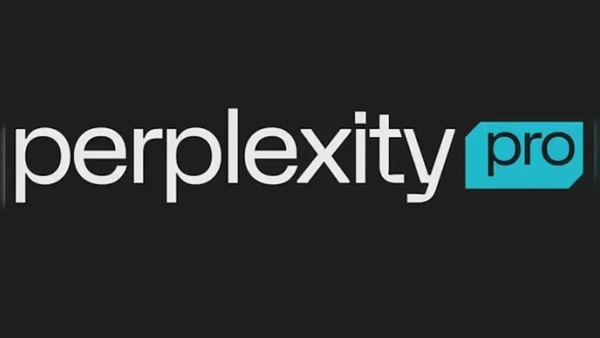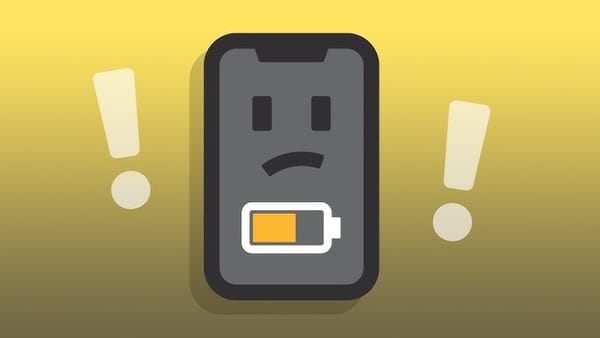The Cost of Living: Why One Paycheck Will Always Leave You Vulnerable
The "stable job" promise is obsolete. Discover why a single income leaves you vulnerable and learn to architect a multi-stream financial future that offers real security

You’re told one stable job is enough to cover your costs and build a life. But what if that “stability” is the very thing keeping you financially vulnerable?
In today’s economy, relying on a single paycheck isn’t security; it’s a critical exposure that most can no longer afford.
Table of Contents:
· Introduction
∘ The Single Income Trap
∘ The Case for Income Diversification
∘ Building Your New Foundation
∘ Categorizing Potential Income Streams
∘ Initial Implementation: Getting Started & Funding Growth
∘ Recurring Funding Cycle: Build Self-Sufficiency & Scale
∘ Conclusion: The Path to True Financial Ownership
Introduction
That long-held promise of financial security through a single stable job? It’s obsolete.
Once, the bedrock of economic certainty, that blueprint for finding a “good job” and watching costs align, is now a dangerous luxury.
Today, for anyone without a pre-existing financial cushion, a singular paycheck doesn't just fall short; it actively creates risk.
Wage stagnation erodes buying power faster than raises materialize.
Job security is a corporate talking point, not a guarantee.
Every unexpected expense, market shift, and every industry disruption lands as a direct hit to your most critical and only income source.
Relying solely on one income stream, particularly from an entry-level or unstable position, builds no foundation.
It traps you in perpetual vulnerability, bottlenecks your growth, and exposes you to forces far beyond your control.
To genuinely meet your full costs of living and start to build any meaningful leverage, a singular paycheck is no longer sufficient.
It’s a systemic trap you need to recognize and address.
The Single Income Trap
The belief that a singular paycheck offers security is a dangerous illusion, especially when your position isn’t at the top.
For most, relying on one income stream doesn’t just limit growth; it actively cultivates profound financial instability. Here’s why:
- Zero Diversification, Zero Buffer: Imagine your entire life’s financial weight resting on one thin thread. That’s a single income stream. If that thread frays, through any unforeseen circumstances, your entire financial stability is at risk. There’s no fallback, no buffer, no alternative revenue to catch you. Every economic tremor becomes a direct hit, amplified by your singular point of tension.
- The Stagnation Trap: Most single jobs, particularly at the lower and middle tiers, are designed for predictable, non-exponential income. Annual raises barely outpace inflation, if at all. Your income is tethered to a fixed hourly rate or a rigid salary band, ensuring your earnings remain capped. Your earnings ceiling is artificially low, preventing any real acceleration of capital or wealth.
- Job Security: A Relic of the Past: The concept of a job for life is defunct. Automation, outsourcing, economic downturns, ruthless corporate restructuring, and, of course, the mass adoption of AI, mean your position can be eliminated with little warning. Putting all your income eggs in one employer’s basket is a gamble with odds increasingly stacked against you.
- The Unseen Mental Cost: The most insidious flaw of single-income reliance isn’t just financial; it’s mental. The crushing pressure to make this one job cover every bill, every emergency, every aspiration, drains your most valuable resource: your mental bandwidth and creative energy. You’re perpetually on edge, leaving little capacity for personal growth, skill development, or building something truly your own. It’s a constant state of anxiety that stifles initiative and prevents you from seeing or pursuing viable alternatives.
The Case for Income Diversification
The vulnerabilities of a single paycheck are clear. But the antidote isn’t elusive; it’s a deliberate architectural flip in how you earn.
Strategic income diversification directly addresses each pitfall of the single-income trap, transforming fragility into resilience and stagnation into accelerated growth.
It’s not just about building the means to make more money, but a fundamentally different and far more robust financial operating system.
- Built in Redundancy: A single income creates a singular point of tension; multiple income streams build redundancy. If one falters, a job layoff, a client loss, or a market shift, the other continues to generate income, acting as an immediate shock absorber. Granting you genuine control and options during a crisis. You move from being utterly dependent to robustly self-reliant.
- Accelerated Capital Accumulation: Even modest additional income, strategically deployed, drastically accelerates your financial timeline. Extra cash each month, channeled into debt repayment, an emergency fund, or even early micro-investments, compounds over time. This extra capital provides the crucial oxygen for future growth, reducing your reliance on excessive budgeting or prudent savings.
- Skill Stacking & Unlocking Value: Every venture beyond your primary job forces new learning. Managing a side hustle is a new domain that means acquiring skills in marketing, sales, customer service, or a specific technical craft. Each new skill increases your overall market value, makes you more adaptable, and unlocks new, higher-paying opportunities.
- Reclaiming Mental Bandwidth & True Agency: Counterintuitively, a strategically diversified income plan can actually free up mental energy. The relentless pressure of a single, all-or-nothing job drains you. But the control and autonomy gained from even small, self-directed income streams, especially those tied to something you're good at, is empowering. This feeling of agency reduces anxiety and preserves mental capacity, allowing you to think long-term, learn, and truly build something meaningful.
Building Your New Foundation
Recognizing the single-income trap is only the first step. The true challenge and your ultimate liberation lie in strategically building multiple income streams.
This isn’t an overnight pivot; it’s a phased, deliberate construction project demanding patience, discipline, and a willingness to redfine what “free time” truly means.
Your first steps out of the trap require a brutal assessment of your time.
In the initial stages of building anything new, “free time” not spent is worthless; it’s potential capital; It's the currency you invest when traditional capital is scarce.
This means reworking, cutting into, and readjusting the existing routine.
While burnout is a real threat, and balance must be struck, the reality is, the more focused effort you deploy early, the faster results begin to materialize.
Building something durable is never easy, but it starts by carving out dedicated, consistent, and regular work blocks.
Crucially, your first side hustle or additional income stream should not aim to replace your entire income.
That’s a common, yet often fatal, misconception. In fact, it should aim to make as little as possible initially, focusing solely on validating the concept and allowing you to learn the mechanics of managing it.
If it generates too much, too fast, without a strong operational foundation, you’ll mismanage it and likely burn out or scale inefficiently.
Start small, grow small, and learn along the way.
The goal is to build something reliable, not riches.
Categorizing Potential Income Streams
While the variations are countless, most effective secondary streams fall into one of three archetypes. Understanding these helps you choose what aligns with your skills, resources, and long-term goals.
- The Monetizable Skill (Leverage Your Expertise): This stream capitalizes on an existing talent or one you can acquire and eventually refine to a point where aspects can eventually be automated or outsourced. It’s a direct exchange of specialized knowledge or ability for payment.
- Examples: Offering services as a private chef, a video editor, a freelance photographer, a gardener, a graphic designer, or a specialized writer. This often yields a higher hourly rate once proficiency is established, in addition to the flexibility of choosing your own hours.
ㅤ2. The Time-for-Money Exchange (Immediate Cash Flow): These are jobs where your time is directly traded for a guaranteed, fixed amount of money. They offer predictability and often flexibility, providing crucial initial capital without complex setup.
- Examples: Participating in the gig economy (Uber, DoorDash, TaskRabbit), providing virtual assistance services (Fiverr or UpWork), or engaging in general manual labor. These are ideal for filling immediate financial gaps.
ㅤ3. The Build Now, Benefit Later (Long-Term Leverage): This category involves creating foundational assets or a platform that may not generate significant income immediately but promises scalable or passive returns in the future. It’s an investment of time and effort for long-term leverage.
- Examples: Building a niche YouTube channel, launching a specialized blog, creating and selling merchandise, or digital products (e-books, templates, courses), or developing a unique services-based business with an automation roadmap. This is where true income independence begins to brew.
Initial Implementation: Getting Started & Funding Growth
Once you grasp these archetypes, the next step is active implementation. You won’t pursue all three at once, especially if you’re still in a full-time role.
Start by selecting one or two streams that align with your available time, existing skills, or a skill you’re committed to dedicating time to acquiring.
Your primary job, whether full-time or part-time, remains your anchor, providing the immediate capital needed to fuel this transition.
If your chosen stream demands a new skill, specialized gear, or initial expertise you lack, that’s your first priority.
You don’t wait for “perfect conditions”; you create them. This means critically assessing your current lifestyle.
That daily coffee, the frequent take-out, the discretionary entertainment, these can be quite wasteful and could better serve as potential investments. Budget relentless. Cut back temporarily on non-essentials.
Every dollar saved from your current income, or every hour repurposed from unproductive leisure, becomes seed funding for your new ventures. It’s strategic reallocation of scarce resources to buy your future freedom.
Acquire what’s essential to simply get started, not to optimize immediately.
Minimum viable equipment, minimum viable training. Just get started.
Recurring Funding Cycle: Build Self-Sufficiency & Scale
The critical, often overlooked, strategy for multi-stream success is the recurring funding cycle.
This is how you strategically funnel income from one stream to bootstrap the next, without draining your personal finances or falling into debt. Think of it as an internal growth engine for your income portfolio.
Here’s the foundational Model:
- Phase 0: Initial Seed (If applicable): If you have existing savings, commit less than half as a calculated, finite starting block for initial essentials. Once spent, you do not dip back in. Future growth must be funded solely by the revenue generated from your new income streams. This enforces early discipline and immediate self-sufficiency.
- Phase 1: Main Job to New Stream: Your primary job provides the initial capital. Use it to fund the foundational needs (skills, tools, software) for your first side hustle, whether a monetizable skill service or a time-for-money gig.
- Phase 2: Bootstrap the Next: Once your first side stream generates consistent income, reinvest its profits. Use these earnings to refine the existing stream (e.g., better equipment, advanced training) or to launch a second venture, like a “Build Now, Benefit Later” project. Avoid diverting these nascent profits for personal spending.
- Phase 3: Self-Sufficiency & Offset: Each income stream’s ultimate goal is to become self-operational and self-sufficient. This means it covers all its own costs and operational expenses, no longer requiring cross-funding. Only then should you consider using its net profits to directly offset your living costs or for potential scaling.
Consistently funnel profits back into growth.
Conclusion: The Path to True Financial Ownership
The single-income trap is a thing of the past.
Your solution isn’t a mythical perfect job or building a career, but a strategically built income portfolio.
This disciplined, iterative funding cycle, where fragmented efforts coalesce into a cohesive, leveraged system, is the foundation that will enable your transition out of a single-paycheck dependency.
The initial investment of time and focused effort will be demanding at first.
There’s no getting around that.
But this commitment is the fundamental difference between perpetually selling your time and truly owning it.
Once each income stream stands on its own, fully self-sufficient and automated where possible, the sky's the limit, and all you extract is profit, never principal, never time.
Eventually, with multiple robust and increasingly passive streams in place, you might unlock a level of financial independence where working becomes a choice, not a necessity. You rewrite your own financial rules.



